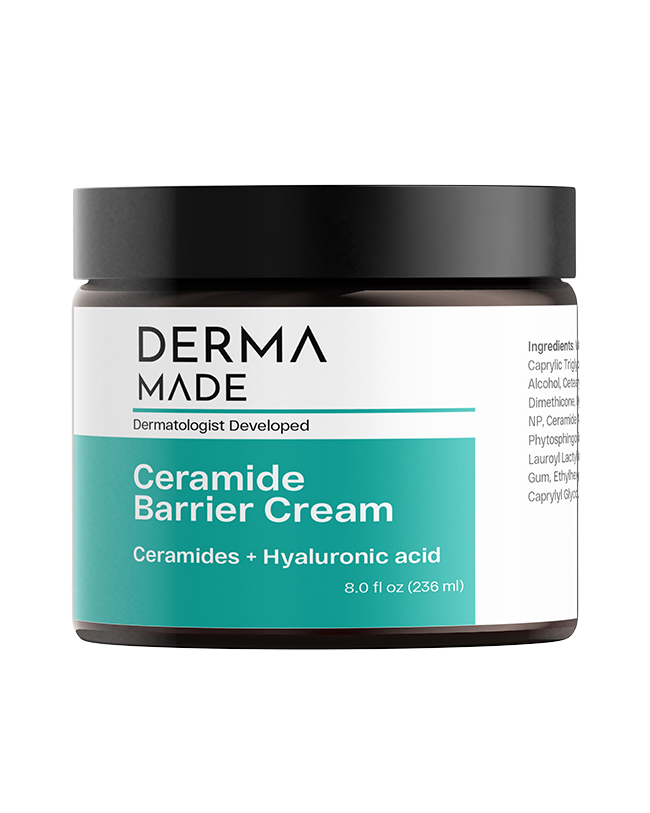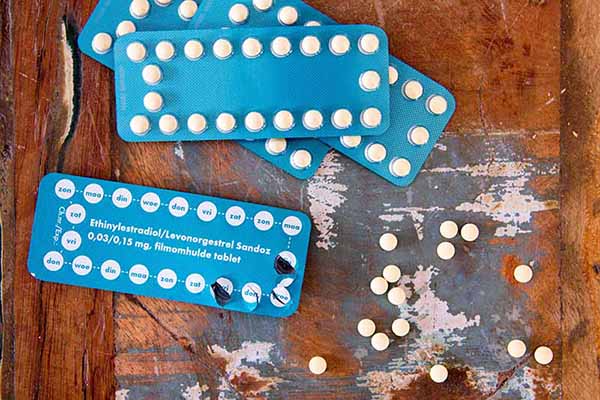There are around 1,000 species of microorganisms that live on your skin. A healthy moisture barrier is essential for your skin’s protection and health. But what is a moisture barrier? Learn the importance of the skin’s moisture barrier and how to tell when it is broken.
The First Line of Defense: The Moisture Barrier (aka Acid Mantle)
Did you know that your skin has a built-in shield? It’s not necessarily something firm you can feel or touch. Rather, it’s a slightly acidic layer on top of your skin. It’s known as “the moisture barrier”, and is also sometimes called the” acid mantle”.
So, What Does the Moisture Barrier Do?
1) The Moisture Barrier Keeps Water in the Skin
The simplest purpose of your moisture barrier is found in its name. It helps to keep moisture in your skin. An intact, working barrier helps to stop water loss.
Your skin loses water and dries out. Something which happens much faster in dry climates. It also happens due to air conditioning. On a small level, this just leaves the skin a little bit dehydrated, which is easily fixed with skincare remedies, like a moisturizer or an oil. The real issue is when it dries out too often, the moisture barrier gets damaged.
2) The Moisture Barrier Protects Skin from the Environment
Your skin carries 6.5 million bacteria per square inch. When the skin barrier is intact, it’s a super-effective defense against not-so-friendly microbes and other potential skin irritants. The moisture barrier is essential for the healthy function and appearance of the skin. When skin isn’t fully protected from the environment due to a damaged barrier, outside pathogens have a chance to attack the skin, causing skin issues such as psoriasis and eczema.
Studies have found a possible link between a damaged barrier and acne.
How Do I Know If My Moisture Barrier Is Damaged?
There are a lot of different ways to tell if your moisture barrier is damaged. Your skin might not have all of these symptoms. But if you have more than a couple of these issues, that’s probably an indicator that you’re dealing with a damaged skin barrier. Here is a list of indicators.
● Products sting when you put them on, even simple, non-irritating ones like a moisturizer.
● Skin feels rough to the touch, but not from acne bumps.
● Your skin is extremely reactive to products.
● Skin feels tight and itchy all over.
● You have stubborn acne, and it seems like everything makes your skin break out.
● Your skin seems dry, no matter how much moisturizer you apply.
● Your skin turns red and flushes very easily
If you’ve ticked off more than a few of these, it’s probably a good time to take a look at your skincare routine.
What Causes a Damaged Moisture Barrier?
In most cases, repairing a damaged moisture barrier is as simple as taking a look at what you’re using on your skin.
1) Using High pH Products
Remember how the other name for the moisture barrier is the acid mantle? There’s a good reason for that. Our skin is healthiest when it has a naturally slightly acidic pH level—somewhere between 4 and 6.
Most skincare brands wouldn’t tell you what the pH of a product is, but you should demand this information. Using a high pH product on skin leaves the skin’s pH too high for two to six hours after use—that’s a lot of time for skin to potentially be exposed to irritants!
Examples of high pH products:
– Bar Soap
– Hand Soap
– Some foaming face washes
– Milk of Magnesia
2) Over-exfoliating Your Skin
On the other end of the spectrum, just like using too many alkaline products, using too many acidic products, in particular acid exfoliators, can be damaging. Exfoliation does a world of good for the skin—decongesting pores, fading hyperpigmentation , and even boosting ceramide levels (ceramide restores moisture and repairs environmental damage).
It’s entirely possible to have too much of a good thing. And while there are a lot of amazing exfoliants out there, most people don’t need multiple acid products, like a salicylic acid toner, plus a glycolic acid toner plus lactic acid. That’s a lot, even for very resilient skin!
When introducing an exfoliant to your skincare routine, it’s always a good idea to introduce it slowly to avoid any irritation and possible barrier damage. Any tingling, stinging, or flushing immediately after applying your exfoliating toner is a signal that you need to slow down! This goes for physical scrubs too. It’s easier to disrupt the skin barrier with a physical exfoliant. So if you’re a fan of using scrubs, but have tell-tale signs of a damaged moisture barrier, this could be the source of your problems.
It’s also incredibly important to use properly formulated chemical exfoliants that are at the correct pH for the skin. For example, lemon juice is a commonly touted ‘natural exfoliant’, but has an extremely low pH of 2—low enough to cause damage to the skin, such as stinging, peeling, itching. Not something that you want to expose your skin to!
Avoid over-exfoliation by:
– Using properly formulated products (no lemon juice!)
– Gradually introducing exfoliants to skin
– Not using too many acids at once
3) Stripping Your Skin of Moisture (and Not Putting Enough Back)
Not many people realize they’re actually being harsh on their skin and over stripping it, especially those with oily skin. We’re conditioned to think that our skin needs extra foamy, drying cleansers and alcohol-based toners to get rid of the oil. When in fact we’re adding to the same problem that we’re trying to fix! We are conditioned to think that the squeaky-to-the-touch-feel is what it means for the skin to be “clean”.
The fact is, the skin needs a healthy balance of water and oil to maintain a strong moisture barrier. This means putting away drying, astringent toners and swapping foaming cleansers for gentle, gel-based formulas like an oil cleanser. It’s also important to add extra moisture to the skin, especially in dry environments (whether natural or artificially-caused from air conditioning or heating). This can come in the form of serums, hydrating toners, gels, and creams that all work to keep hydration in the skin—where it needs to be for a healthy moisture barrier. Occlusives, or film forming products, such as vaseline (which by the way has a comedogenic index of 0 – as low as it can be), also work to seal water into the skin. You can use them all over to lock in hydration, or on dry patches to heal them quickly. Either way, it’s a great idea to keep some on hand!
Avoid stripping your skin by:
– Ditching foaming cleansers for non-foaming
– Not using harsh toners or masks
– Using multiple moisturizing steps (serum, toner, cream)
Takeaway
A healthy intact moisture barrier is necessary for glowing, problem-free skin. Use acids and other exfoliants in moderation. Learn how to properly exfoliate in this article. And moisturize regularly with a cream or an oil.







